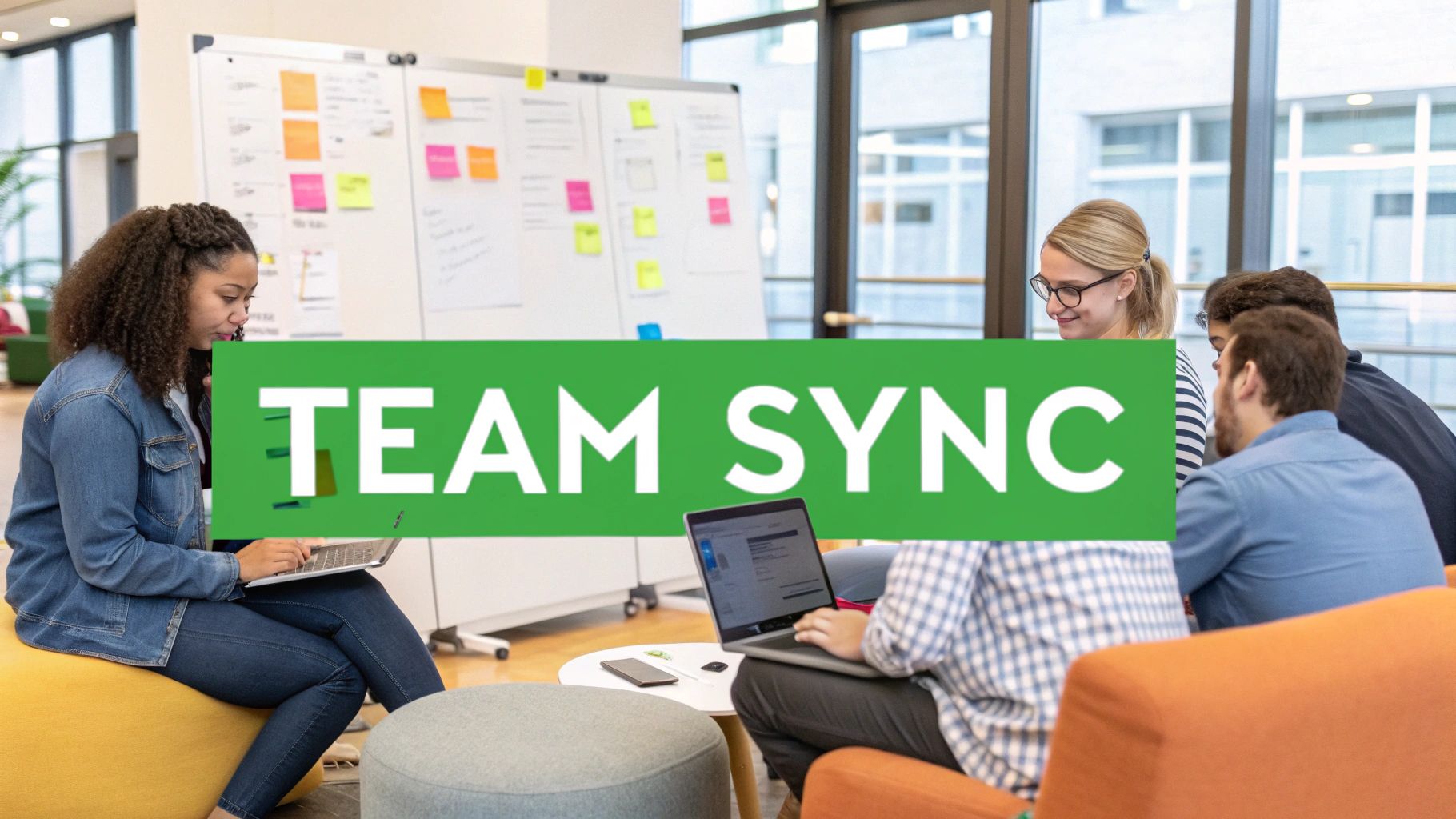Breaking the Agile Documentation Myth

There’s a common misunderstanding that Agile methodology clashes with documentation. Many interpret the Agile Manifesto’s emphasis on “working software over comprehensive documentation” as meaning no documentation. But that’s not quite right. Agile doesn’t eliminate documentation; it refocuses it.
Instead of hefty upfront documentation, Agile promotes a “just enough” approach. Documentation becomes part of the development process, not a separate task afterward. This aligns with Agile’s core values of adaptability and customer value.
Documentation in Agile supports the team, improves communication, and helps deliver a successful product. User stories and acceptance criteria, for example, are concise yet effective tools for clarifying desired functionality. Living documentation, continuously updated, provides valuable context and supports ongoing development and maintenance.
The Agile Manifesto encourages a minimalist approach to documentation, keeping it user-focused and relevant to project needs. This philosophy is backed by data showing improved operational performance and customer satisfaction for Agile teams. Practices like continuous documentation and automation help maintain this balance, ensuring documentation stays relevant without excessive overhead. Agile’s influence extends to product documentation, emphasizing real-time collaboration and stakeholder engagement. Learn more about current trends: Documentation in Agile: Challenges and Trends in 2023.
Finding the Right Balance
Integrating documentation effectively within Agile requires careful planning. A key element is determining the right level of detail. Too little documentation creates confusion and rework, while too much slows the team down. The ideal balance depends on several factors: project complexity, regulatory needs, and team distribution.
For further insights, check out this resource: Documentation in Agile Development: The Balancing Act. Another vital consideration is weaving documentation into the Agile workflow. This could involve assigning specific sprint tasks for documentation or including documentation reviews in sprint ceremonies.
By prioritizing documentation within the Agile process, teams give it proper attention without losing agility. This collaborative approach ensures documentation stays aligned with the evolving needs of the project and the customer.
Navigating Documentation Challenges in Modern Agile Teams

As development teams increasingly adopt agile methodologies, the purpose and style of documentation are evolving. This presents distinct challenges, especially for companies transitioning from traditional waterfall approaches. These teams often face the difficulty of balancing the need for speed and flexibility with thorough documentation. This requires a fundamental change in how teams view and implement documentation within the agile structure.
One common obstacle is the varying perspectives on documentation among different stakeholders. Developers may prioritize technical details, while customer support teams require user-friendly guides. Management might need high-level documentation for compliance and reporting.
This means a one-size-fits-all approach is often ineffective, requiring customized strategies for different needs. The growing use of Agile highlights its significance: By 2023, 71% of respondents to the 17th Annual State of Agile Report used Agile in their software development. More detailed statistics can be found here: Agile Statistics.
Framework-Specific Documentation
Adding to this complexity is the difference in documentation needs across various agile frameworks. Scrum, Kanban, and SAFe (Scaled Agile Framework) each possess distinct qualities that influence documentation practices. This requires teams to adjust their documentation strategies to fit the chosen framework.
- Scrum: Emphasizes short sprints and iterative development, favoring just-in-time documentation and close collaboration. This often involves user stories, acceptance criteria, and sprint review documentation.
- Kanban: Focuses on continuous flow and visualizing the workflow, making visual documentation like Kanban boards and workflow diagrams essential. It also stresses reducing work-in-progress and increasing efficiency.
- SAFe: Addresses scaling agile across larger organizations, requiring more extensive documentation for coordinating and aligning multiple teams. This often includes documentation for architectural decisions, dependencies, and risk management.
Adapting to Organizational Culture
Successfully combining agile methodology and documentation also significantly relies on organizational culture. Companies with established practices of detailed documentation may find transitioning to a leaner approach difficult. Conversely, organizations unfamiliar with formal documentation may struggle to implement effective documentation practices.
Therefore, aligning documentation strategies with the specific company setting is crucial. It is important to cultivate a culture of collaborative documentation within agile teams. This involves training, clear guidelines, and continuous evaluation to ensure documentation helps, not hinders, the agile process.
Documentation Strategies That Enhance Agile Performance

Extensive documentation can seem outdated in the fast-paced Agile environment. However, effective documentation can significantly improve Agile performance. This involves aligning documentation with Agile’s adaptability and customer value focus.
One crucial strategy is Documentation as Code. This treats documentation with the same rigor as code, using version control, automated testing, and continuous integration. Tools like Sphinx or MkDocs help synchronize documentation with code, keeping it current.
Another important approach is Just-in-Time Documentation. This creates documentation only when needed, preventing wasted effort on outdated material. This aligns perfectly with Agile’s iterative nature.
Collaboration is also vital. Tools like Confluence and Google Docs enable real-time teamwork on documentation, fostering shared understanding and ownership. Agile documentation prioritizes lightweight, iterative, and collaborative approaches, creating just enough information to support project needs. Automation streamlines tasks and ensures consistency. Learn more about documentation best practices: Agile Documentation: Examples and Best Practices.
Adapting Documentation to Project Needs
Agile emphasizes flexibility, and documentation strategies should adapt accordingly. Complex projects may require more documentation to manage dependencies and architectural decisions. Regulations in sectors like healthcare or finance also influence documentation needs.
Team distribution is another factor. For distributed teams, readily accessible online documentation is essential for seamless communication and knowledge sharing. Further insights can be found here: Code Documentation Best Practices Guide for Developers.
Documentation Examples in Agile
Agile documentation takes many forms, depending on project needs. Here are some examples:
- User Stories: Briefly describe functionality from the user’s perspective.
- Acceptance Criteria: Define completion conditions for user stories.
- Sprint Backlogs: List tasks planned for a specific sprint.
- API Documentation: Explains how to interact with software components.
- Architectural Diagrams: Visually represent system design. To further illustrate the differences between traditional and Agile documentation, let’s look at a comparison table:
Traditional vs. Agile Documentation Approaches: A comparison highlighting the key differences between documentation in traditional and Agile methodologies, with focus on timing, detail level, ownership, and purpose
This table highlights how Agile documentation prioritizes efficiency and relevance by focusing on just enough documentation at the right time. The collaborative ownership model promotes shared understanding and responsibility.
Practical Implementation Stories
Successful Agile teams refine their documentation strategies for optimal performance. Some update documentation daily during stand-up meetings. Others automate documentation generation from code.
These teams find that prioritizing relevant documentation enhances efficiency and reduces rework. By continuously refining their approach, they maintain agile velocity while ensuring documentation remains valuable.
Measuring What Matters in Agile Documentation

How can you tell if your agile documentation strategy is working? Relying on instinct isn’t reliable. A solid approach uses both quantitative metrics and qualitative indicators to truly understand if your documentation supports your agile goals.
Quantifying Documentation Success
Several metrics can help you measure how effective your documentation really is. Tracking documentation usage shows which documents are accessed most often, indicating their value. This information helps you decide which documents need updating and which are less important.
Team satisfaction is another crucial metric. Surveys and feedback sessions can reveal how helpful developers and other team members find the documentation. High satisfaction scores suggest the documentation contributes positively.
Finally, getting stakeholder feedback, especially from customers, offers valuable insights into clarity and usability. This outside perspective ensures the documentation meets the needs of the people who use it.
Agile metrics are essential for evaluating team performance and project advancement. For instance, metrics like velocity, which quantifies the average work completed per sprint, aid in predicting future project needs. This facilitates effective planning and resource allocation. Learn more about these metrics: Agile Project Management Metrics.
Qualitative Insights for Continuous Improvement
While numbers provide a snapshot, qualitative feedback adds depth and context. Interviews with key stakeholders, including developers, product owners, and customers, provide a richer understanding of their experiences with the documentation.
Retrospectives offer a structured way for teams to discuss what works and what doesn’t. These discussions often uncover areas for improvement that metrics alone can’t reveal. For instance, a team may discover that a frequently accessed document is also confusing.
Observing teams using documentation in their daily work offers practical insights. Do they easily find answers in the documentation? Or do they seek information elsewhere? These observations can directly improve the documentation.
Creating a Framework for Measurement
A practical measurement framework is essential to avoid unnecessary overhead. Start by identifying the most important metrics and indicators for your team. Focus on those that directly support your agile objectives.
Next, determine how you’ll collect the data. Will you use automated tracking, surveys, interviews, or a combination? Choose methods that are efficient and don’t disrupt the team’s workflow.
Finally, schedule regular reviews of the data. Use your findings to improve the documentation. This ongoing process should be built into the agile cycle of continuous improvement. This data-driven approach helps teams refine their documentation strategies, ensuring they align with agile principles and provide real value.
Tools That Transform Agile Documentation
The right tools can dramatically improve how your team handles agile documentation. This article explores solutions that high-performing teams use to create, maintain, and share documentation efficiently. We’ll examine how these tools integrate with Agile systems, support collaboration, and scale with teams of all sizes. We’ll also look at how AI is impacting agile documentation, realistically assessing its potential and limitations.
Streamlining Your Agile Workflow with Effective Tools
Selecting the right tools can streamline documentation within your agile workflow. Effective tools enhance collaboration, automate tasks, and ensure consistency. They also support a range of documentation formats, from basic text files to complex diagrams.
For example, Confluence provides collaborative workspaces where teams can co-author and review documents simultaneously. This promotes shared understanding and ownership, core principles of Agile. This is particularly useful in remote or hybrid work environments.
Integrating documentation tools with your Agile management system, such as Jira, connects documentation directly to user stories and tasks. This keeps everything linked, making it easy to track requirements and monitor progress.
To help you find the right tools, we’ve compiled a comparison of some popular options:
Here’s a brief overview of what to look for when selecting a documentation tool:
The table below provides a comparison of popular documentation tools, highlighting their strengths and weaknesses.
Top Agile Documentation Tools Comparison:
This table offers a starting point for evaluating tools based on your team’s specific needs. Consider factors like team size, budget, and existing tool integrations when deciding.
The Impact of AI on Agile Documentation
Emerging AI-assisted documentation technologies are changing the way agile teams work. Tools like DocuWriter.ai automate the creation of code documentation, freeing up developers to focus on coding and delivering value faster.
However, AI in documentation has its limitations. While it excels at generating standard code descriptions, it can struggle with nuanced explanations of complex functionality. Human oversight and editing remain essential for accuracy and clarity.
AI tools should augment, not replace, human writers. The most effective approach combines AI efficiency with the expertise and insight of technical writers. This collaborative approach empowers teams to create high-quality documentation quickly and efficiently. By carefully selecting the right tools and integrating them effectively, agile teams can leverage documentation to boost performance and deliver better products. These tools offer the ability to create dynamic documentation that evolves alongside the project, reflecting Agile’s core values of adaptability and continuous improvement.
The Future of Agile Methodology and Documentation
Agile methodologies and thorough documentation are no longer considered conflicting concepts. Looking ahead, several key trends are shaping how development teams approach documentation in agile environments. These trends promise to further integrate documentation as a valuable asset, boosting the overall effectiveness of the agile process. Staying ahead of these trends is essential for teams aiming to maximize their agile performance.
AI-Assisted Generation
AI-powered documentation tools like DocuWriter are becoming increasingly sophisticated. These tools automate routine documentation tasks, such as generating basic code descriptions and API specifications. This frees up technical writers to concentrate on more strategic work, like crafting user-friendly guides and tutorials. Imagine tools that analyze code and automatically create initial documentation drafts, saving valuable time and effort.
While AI offers tremendous potential, it’s not a complete substitute for human writers. AI still requires human oversight to ensure accuracy and provide nuanced explanations, especially when dealing with complex systems. The future likely involves a collaborative approach, blending the efficiency of AI with the expertise of human writers.
Distributed Team Practices
With the increasing prevalence of remote and hybrid work models, distributed teams encounter unique documentation challenges. Teams working across different locations and time zones need readily accessible and consistently updated documentation. Cloud-based documentation platforms are becoming indispensable for these teams, facilitating real-time collaboration and seamless knowledge sharing.
Comprehensive documentation also plays a vital role in onboarding new team members. It provides a centralized source of information about project history, coding standards, and established best practices. This asynchronous access to essential knowledge promotes smoother onboarding and faster integration into the team.
Evolving Regulatory Requirements
Industry regulations, particularly in sectors like healthcare and finance, significantly impact documentation needs. Agile teams operating in these regulated environments must strike a balance between speed and flexibility while adhering to strict documentation requirements for compliance and auditing. Tools that automate documentation generation and version control can assist these teams in meeting these stringent requirements without compromising the agility of their processes.
Moreover, as data privacy regulations become increasingly rigorous, documentation practices must evolve to guarantee sensitive information is handled appropriately. This includes documented procedures for data anonymization and the secure storage of sensitive documentation.
Preparing for the Future of Agile Documentation
Forward-thinking organizations are proactively preparing for these evolving trends by:
- Investing in AI-assisted documentation tools: Experimenting with and integrating these tools allows teams to leverage the advantages of automation while establishing best practices for effectively combining AI with human expertise.
- Adopting cloud-based documentation platforms: This guarantees all team members can access the most up-to-date documentation, regardless of their location, fostering seamless collaboration and efficient knowledge sharing.
- Developing robust documentation governance processes: This is critical for organizations in regulated industries, ensuring that documentation adheres to compliance requirements while preserving agility. By actively adapting their documentation strategies, agile teams can ensure their documentation remains relevant, effective, and aligned with core agile principles.